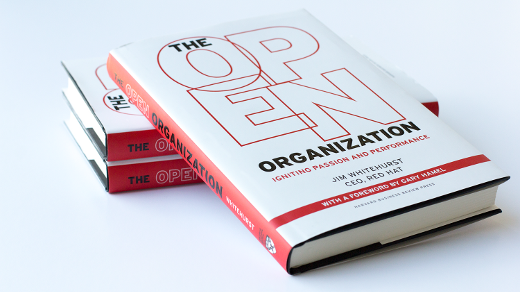When Jason Hibbets asked me to lead this week's discussion for the Open Organization book club, I wasn't sure what I could contribute. My own experiences as a leader weren't disastrous, but they weren't all that successful. Still, I was willing to give it a shot.
By coincidence, I was asked to discuss one of the chapters that really struck a chord with me. The topic of that chapter? Engagement. Having been both an employee and a team lead, I've seen effective and not-so-effective efforts to build and maintain engagement.
Engagement, I've found, can be powerful. It can shape the way employees work. It can strengthen a company. Engaging people in an organization, even an open organization, isn't as simple or straightforward as it sounds. It's worth the effort, as engagement can bring out the best in employees.
Discussion (Chapter 3: Building Engagement)
In the book club this week, we'll be discussing "Chapter 3: Building Engagement."
There are a number of passages in that chapter that got me thinking. But the one that stuck in my head was:
If a key goal of the open organization is to build the capability for members to make their own decisions, act quickly, take initiative, and creatively solve problems, then engagement is critical. I've heard many times—and correctly, I believe—that a leader's primary job is to create context for his or her organization. As Howard Behar, former president of Starbucks, once said: "The person who sweeps the floor should choose the broom ... We need to get rid of rules—real and imagined—and encourage independent thinking." (page 57)
Engagement, though, is a lot like passion (which Open Organization Ambassador Robin Muilwijk discussed recently). But, as Jim Whitehurst wrote, "Purpose and passion go a long way to creating the motivation for being engaged, but neither creates engagement per se." (p. 55)
With the right people, you can easily spark engagement. Engagement can burn strong and bright for a brief period, then quickly fade and turn to ashes. A good leader needs to be able to keep the fires of engagement stoked through the good times and the rough times.
That's the difficult part. Not just engaging people who might be wary of the idea of The Open Organization, but also engaging the passionate employees who might not be fully on board with what you're trying to do. A good leader can help make that happen. One way to do that is for the leader to be accountable. Accountable by explaining why and how a decision was made. Accountable by owning up to mistakes and missteps.
Engagement can, and I think must, go deeper than that. How? I'm turning that over to you to ponder. Feel free to use these questions as a guide:
- What do you believe are the key elements of engagement in an organization?
- How do you create the context that Jim Whitehurst mentioned, the one that engages teams?
- How do you encourage employees who are reluctant to choose their own brooms?
- What do you do when you see the fires of engagement dimming—either in individuals or in multiple members of a team?
Feel free to share your answers and thoughts in the comments section. I look forward to reading what you have to say.






7 Comments